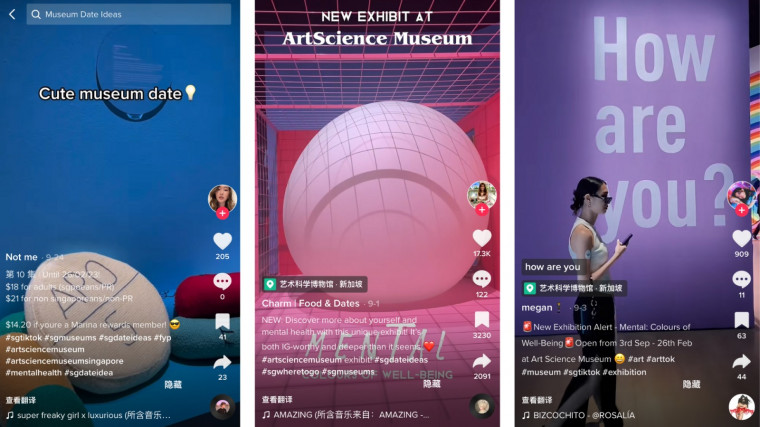|
Audio Version Available
|
#dateideas, #sgdateideas, #aesthetic.
I was scrolling through TikTok when I spotted some videos with these tags.
I couldn’t guess what it was referring to at first, then I saw: “NEW EXHIBIT AT ArtScience Museum”.
Turns out, there’s a mental wellness exhibition at the ArtScience Museum on till Feb 26. Called MENTAL: Colours of Wellbeing, it has 24 interactive exhibits, artwork, large scale installations and aims to normalise and paint mental issues in “a brighter and more colourful light”.
Mental health awareness has become a much-talked about issue, especially in the past two pandemic years. However, there is still much to explore.
Art, with its ability to speak to each of us subjectively, is a great way to introduce the topic. And a cool exhibition at a hip museum, coupled with attractive easy-to-access exhibits sounds like a great idea.
Yet, in focusing too much on the “fun”, would visitors end up missing the point of the exhibition entirely?
Is ‘aesthetics’ all that matters?
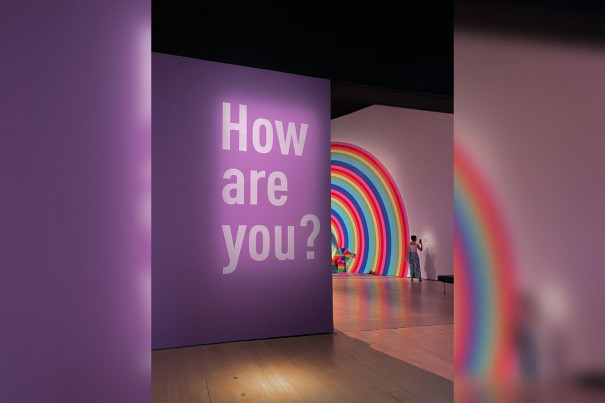
To be fair, the exhibition explains that it is not a showcase about mental illness, treatments or cures.
Instead, it aims to be a welcoming place where visitors can confront societal bias and stereotypes around mental health. It encourages us to “embark on an intimate and personal journey that explores the many different ways of being, surviving and making connections, that have become of increasing importance to us all”.
Yet, as much as the exhibition is to normalise conversations about mental health and wellness, many visitors seem to have taken the exhibition at face value — pretty artworks and nothing more.
Many posts and videos on social media talk of MENTAL as a place that is “IG worthy”, “aesthetic”, a date idea and a place for kids to have fun at.
The deeper meanings behind the installations may have flown over visitors’ heads, much like the kites from Singaporean artist Alecia Neo’s mixed media installation ‘Between Earth and Sky’.
No doubt, there are articles that explain the exhibits in layman terms, but most of the visitors (no thanks to the social media marketing) probably were just doing it for the Gram.
So, how do we draw the line between trivialising mental wellness conversations and taking it so seriously that we forget to enjoy ourselves?
Taking ArtScience Museum’s advice on making it a “personal journey”, I pulled a couple of friends along to experience the exhibition firsthand.
Mixed feelings over mixed media
TL:DR? I was conflicted over how I felt about MENTAL by the time I left the exhibition.
With so many exhibits to take in, here are some that stood out for me:
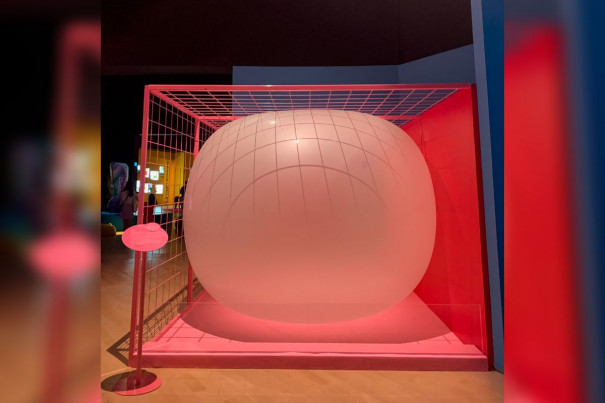
You can’t miss it.
Right after you walk past Emanuel Gollob’s ‘Doing Nothing with AI’, a giant translucent balloon in a large pink cage sits ominously in a corner.
Zhou Xiao Hu’s ‘Even in Fear’ gives an insight on how a person with anxiety would feel on a daily basis — that feeling like something is going to happen, growing and gnawing on you until you feel like it’s going to pop.
A friend of mine who has been diagnosed with anxiety disorder says that it is a good reflection of how she feels on a daily basis.
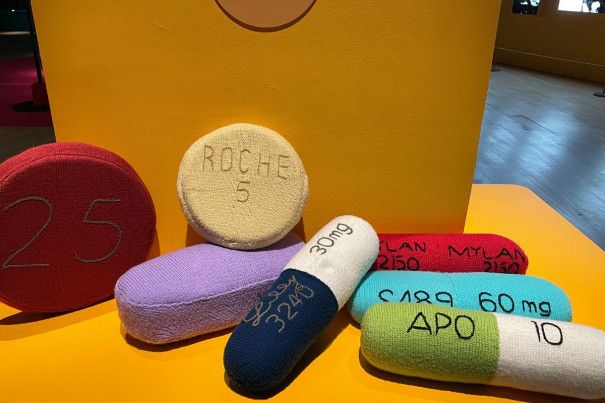
Nearby, some cushions lay, knitted in the shape of pills and embroidered with names of common medications.
Artist Emily Fitzsimons’ ‘Cushions?’ does make perfect sense — medications in mental health treatments provide protection, relief and comfort to those who need them.
The metaphor is pretty easy to get once you see it… that is, if you do see it. The installation itself was so innocuous that it barely resembled an exhibit. Placed inconspicuously at pillars, I almost missed out on it because I initially thought they were just decorations!
I was not the only one. Other visitors were just sitting on the cushions or walking past them.
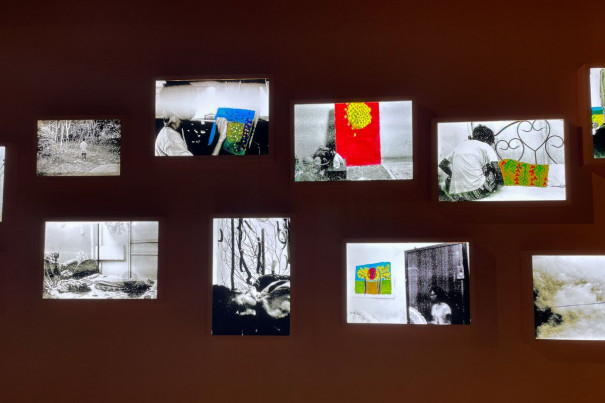
Perhaps it’s a reflection of myself, but away from the colour and chaos of the rest of the exhibits, I love the quiet impact of ‘Noise and Clouds and Us’ by Shwe Wutt Hmon.
The Burmese artist’s images of her sister living with schizophrenia gave me a unique perspective of living with a loved one dealing with their mental illness.
The images were simple but powerful, and also insightful because of how real these scenes are.
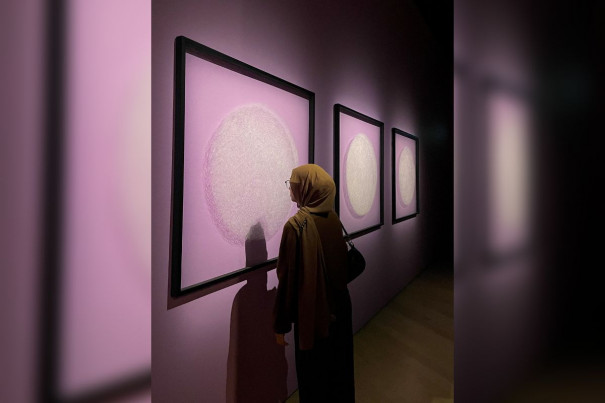
Another simple yet meaningful exhibit is Singaporean artist Lee Yi Xuan’s ‘State of Mind’.
From afar, the circles look neat, round and seemingly perfect. Until you walk up to them. Up close, the circles are actually made up of countless scribbly lines, intertwining with one another so much so that you can’t see where one ends and another begins.
Alternate perspectives
One of my takeaways is how many of the artworks are personal expressions of private thoughts. I tried to put myself in the shoes of the subjects (or even the artists themselves!) of these exhibits but more often than not, I didn’t understand what I was meant to feel.
My friend with anxiety disorder said after the visit: “It feels very sugarcoated, like as if they are putting glitter on mental illness.”
She felt that while some of the exhibits accurately represented mental disorders, like how ‘Even in Fear’ showed her a physical representation of her anxiety, she was unable to make sense out of many of the others.
The descriptions did not aid her in better understanding the artists’ inner thoughts either.
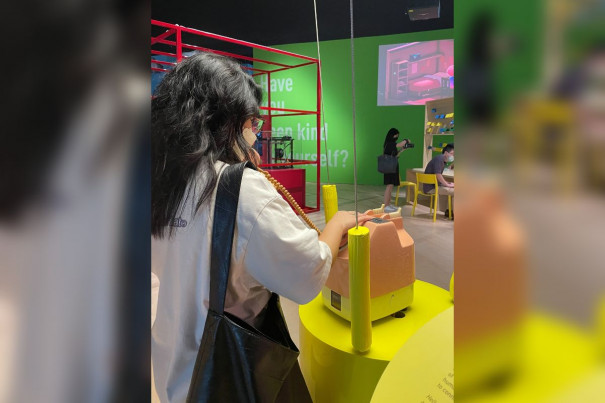
Her confusion reflects how it is not a one-size-fits-all approach to talking about living with mental wellness issues.
Imagine, she said, if she can’t figure out how she’s meant to learn about these issues, how would the average Singaporean, who’s there because “oh, I saw a TikTok video who said it’s pretty.”?
She said: “As someone with depression and anxiety, it does not feel raw and authentic. I get that mental illness is a very huge topic to tackle, but I would much rather see something small that is accurate and meaningful.”
“There are numerous museums that discuss heavy topics (like the Holocaust or violence towards women) that do not sugarcoat or hide things. So I don’t understand why this exhibition couldn’t do the same.”
Another friend was more blunt: “I don’t even think it was that deep, some of the installations actually don’t make sense. How does AI- and tech-related exhibits link to mental wellness?”
She added: “I now understand why the exhibition became the next ‘Instagrammable spot’ for Singaporeans though.”
Come to your own conclusion
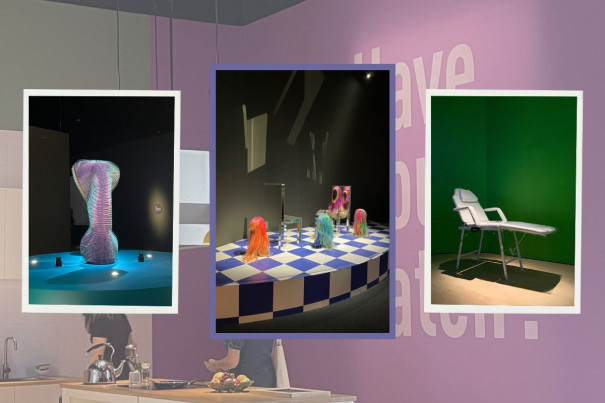
I think MENTAL: Colours of Wellbeing is a good attempt to reach out to those who would normally avoid art exhibitions or mental wellness conversations, but I feel that by focusing on the fun, it only scratched the surface of an important social topic.
It was colourful, fun and definitely picture-worthy, but it still left me feeling empty after I was done.
Well, at least the exhibition’s popular, right?
If you like what you read, follow us on Twitter and Google News to get the latest updates.
